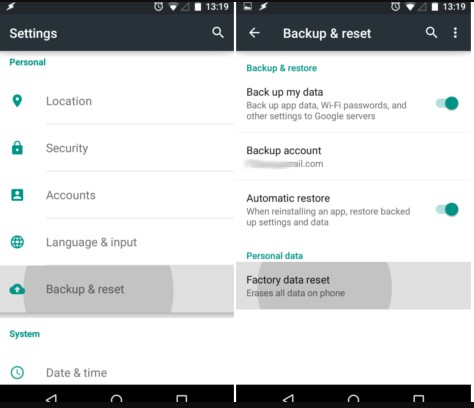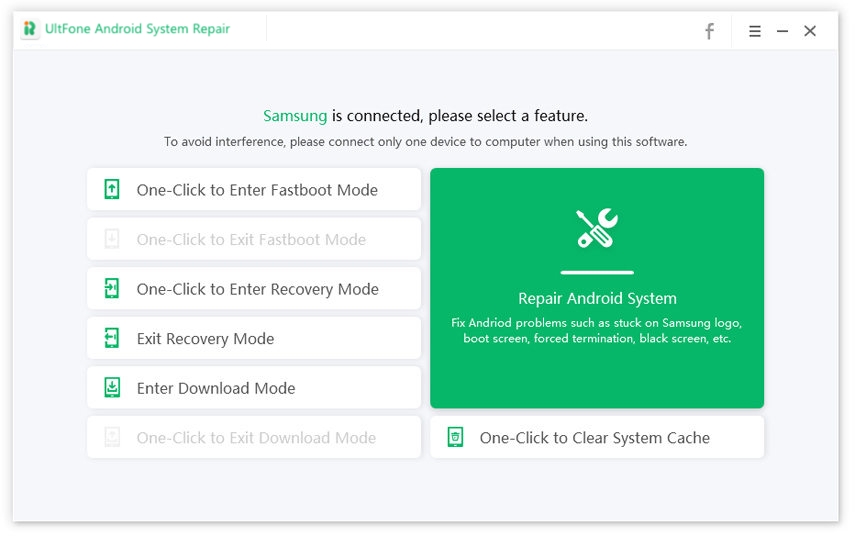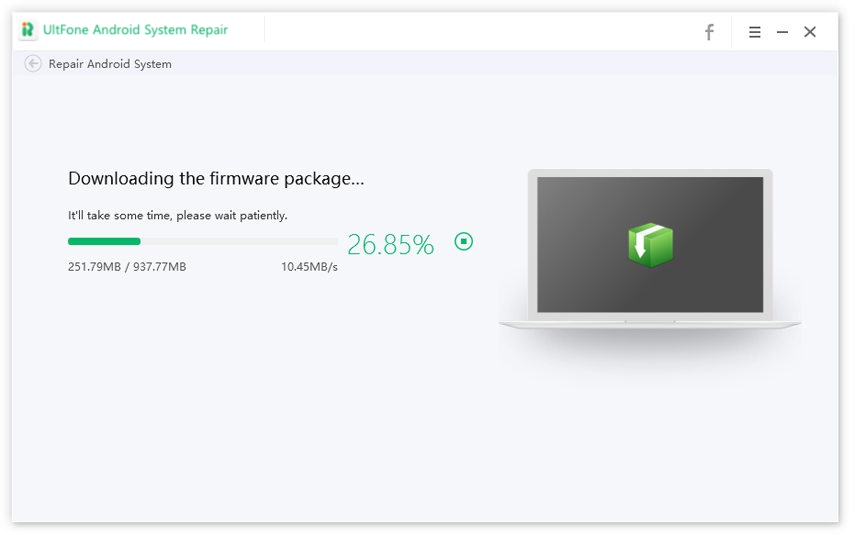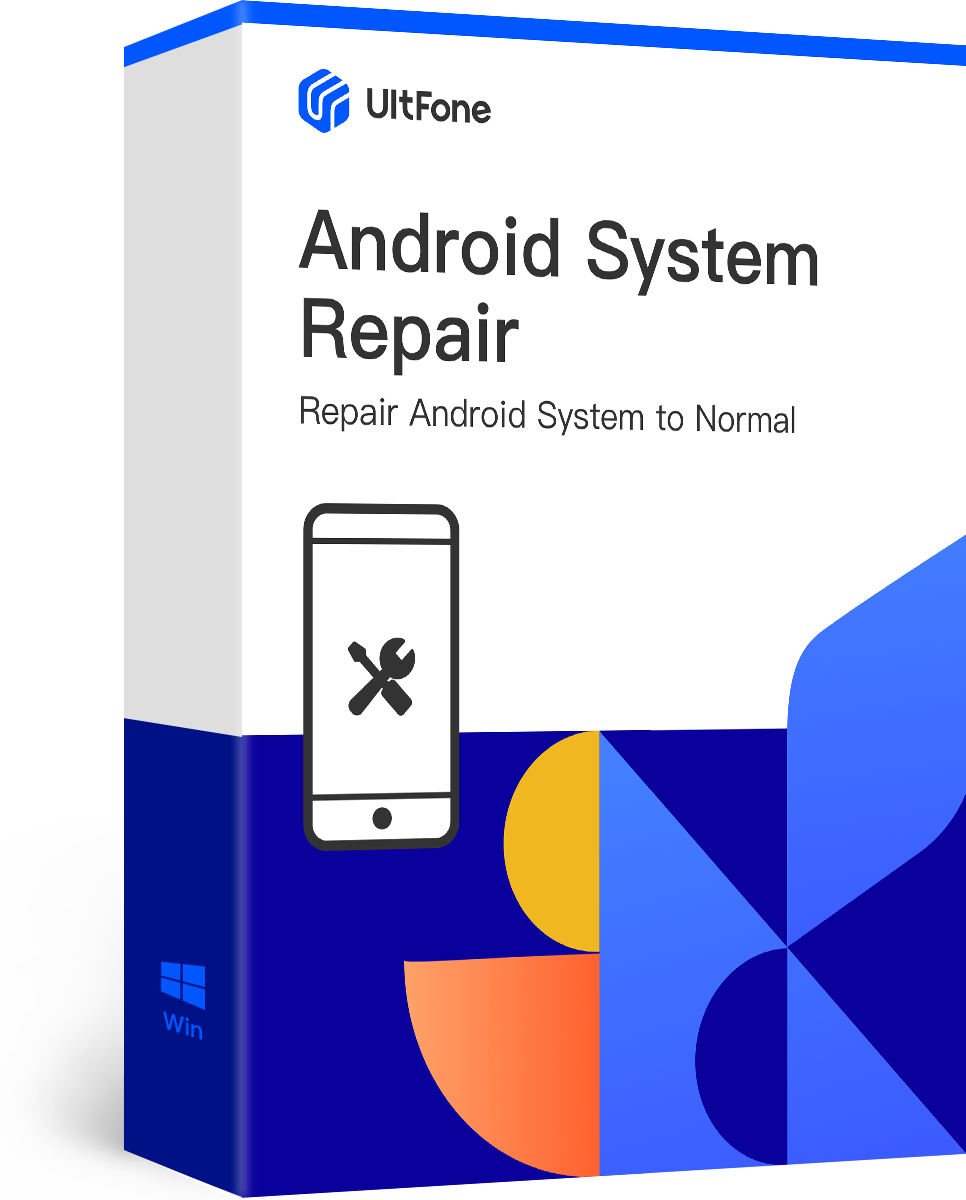[8 Ways] How to Fix Process System Isn't Responding
 Jerry Cook
Jerry Cook- Updated on 2021-05-20 to Fix Android
The process system isn't responding is one of a very common error that you might have come across if you have an Android phone. Particularly Samsung and LG mobile phones are more susceptible to this error message. If you have encountered this message a couple of times on your Android device, you do not have to panic. Many android users have reported this issue.
However, we have good news for you. You can easily fix this issue of "Android process system isn't responding." Here we have listed the main reasons and eight effective ways to solve this issue. So, make sure that you read it till the end.
Part 1. About Error Message - Process system isn't responding. Do you want to close it?
If you are dealing with the problem of the process system isn't responding on Android, then you are not alone. It is a common error that most people face with android devices. Before moving to the effective methods to resolve this issue, let us look at some questions that are important to be addressed.

1. What Is System Isn't Responding?
You might see process system isn't responding in Galaxy S5 or other Android devices too. It is kind of a system bug that might appear on your device screen. When the Android process system isn't responding occurs on your phone, it may freeze up your device or leave an unresponsive screen.
2. Why Does Process System Isn't Responding Occur?
In order to know how to fix the process system isn't responding, it is crucial for you to know the reason behind this error message. There could be numerous reasons that can come into the picture, such as:
- Installation of malicious applications from unknown sources
- Corrupted or damaged SD card
- Missing system files
- Insufficient storage space
- Bad Android update
- A software conflict
Part 2. How to Fix Process System Isn't Responding?
With the ways given below, you can get rid of the Android or Samsung process system isn't responding and get your device to work at its best again.
- Way 1. Restart Your Device
- Way 2. Check Android Updates
- Way 3. Update All Apps Installed on Your Device
- Way 4. Make Sure You Have Enough Internal Memory
- Way 5. Check SD Card
- Way 6. Wipe Cache Partition
- Way 7. Factory Reset Your Device (All Data Erased)
- Way 8. Repair Android System without Data Loss
Way 1. Restart Your Device
One of the simplest ways to fix most of the problems in Android devices is to restart the device. It can not only solve the problems related to freezing and not responding but also fixes many bugs that came with the latest Android update.
Here's how you restart your Android device.
- Press and hold the power button for 10-15 seconds till a power options menu appear.
- In most Android devices, you'll find these four options: Airplane mode, Silent mode, Reboot/Restart, and Power off.
- Press the " Reboot/Restart" button to restart your device.
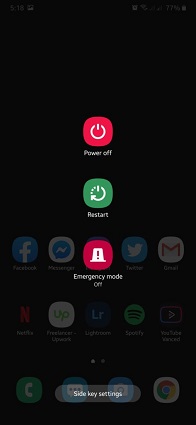
Way 2. Check Android Updates
Android pushes many updates from time to time with feature improvements and bug fixes. It may be that your device has a pending update due to which your device is lagging, or the Android process system isn't responding.
Before you update your device, make sure you have a backup of all your data done. Once that is ensured, follow the steps below to update your device.
- Step 1: Connect your Android device to a reliable and secure Wi-fi network.
- Step 2: Go to the "Settings" on your device.
- Step 3: Tap on the "About Device" option and select the Software Update option.
-
Step 4: Now, touch on the "Check for update" option and complete the process if you see any pending updates there.

Way 3. Update All Apps Installed on Your Device
Most of the time, you may face the error of "Android System not Responding" when starting an app or working on any heavy app. This might occur due to many factors, but the most prominent one is the app's internal updates and bugs. This can simply be resolved by updating apps from the Google Play Store. This is how it's done:
- Step 1: Open the Google Play Store app on your Android device.
- Step 2: Tap the menu button on the left corner of your screen, and from the pop-out that appears, tap on My Apps.
-
Step 3: Now, find the app which shows the "Process system isn't responding" error and update it. Alternatively, you can tap on the "Update all" button, and it will update all the apps on your device.

Way 4. Make Sure You Have Enough Internal Memory
If you see logically at the error "Process system isn't responding," you might be urged to ask why that is the case. You see, this can simply occur because your device doesn't have enough space left to spare to the app you are trying to start. A good consequent solution to this will be freeing up some internal storage and RAM. Below are the steps to do it:
- Step 1: Go to the “Settings”.
- Step 2: Locate “Storage”, and you'll see various apps and documents which are consuming the internal space.
-
Step 3: Make sure your device has more than 300 MB of free storage space at any time if you want to avoid unnecessary system failures.

Way 5. Check SD Card
It could be possible your SD card is damaged or has limited free storage. Especially if you store applications on the SD card, then your device might encounter the LG g3 process system isn't responding issue whenever you launch a respective app. You need to move your apps from SD card to internal storage by doing the steps below:
- Step 1: Go to “Settings” and then tap on “Application Manager”.
- Step 2: Select the malfunctioning app, and there you'll see an option of moving the app to device storage if it’s stored on an SD card.
-
Step 3: Tap on it and do a similar procedure with all the malfunctioning apps individually.

Way 6. Wipe Cache Partition
Cache partition is a space in your device which contains all the cache data. This cache data is nothing but all the temporary files such as thumbnails, and it might increase the burden on your device. If you wonder how to solve the “process system isn’t responding” error, in this case, it is a straightforward process. All we have to do is wipe the cache partition, and here’s how we do it:
- Step 1: Power off your device.
- Step 2: Press and hold together “Volume Up + Home + Power” keys. Leave the power button as the device vibrates, but hold the other two buttons; you’ll see the Android system recovery screen.
- Step 3: Press the volume down button to go down the menu and reach the wipe cache partition.
-
Step 4: Tap the power button to select it and wait for the process to complete. Your device will restart when the process finishes.

Way 7. Factory Reset Your Device (All Data Erased)
Now, if you’ve tried all of the above steps but without any success and you still see the annoying “Process system isn’t responding,” then factory reset is the only option left. This will sure shot solve your problem, but all your data will be lost. So, a prerequisite step before doing this step is to create a backup of all your data. Then after that is ensured, do the following steps:
- Step 1: In the Settings, find the “Backup and Reset” and tap on it.
- Step 2: Ensure that the option to back up your data is checked and then tap on factory data reset.
-
Step 3: The system will ask for final confirmation. Tap on erase everything and wait for the process to complete. Your device will restart at the end of the process.

Way 8. Repair Android System without Data Loss
If you are unable to solve the problem of the process system isn't responding on Android tablet or device using common workarounds, it’s time to use UltFone Android System Repair. Without losing your data, you can solve all Android system problems in a few minutes. You are not required to have special skills to use this tool as it is a very user-friendly software that gives quick and effective results.
Follow the below-listed steps to solve the issue of the Samsung process system isn't responding:
-
Step 1 Connect your mobile device to the PC via a USB cable. Select the Repair Android System option after launching the UltFone Android System repair.

-
Step 2 Tap on the Repair Now option. Enter the device information.

-
Step 3 Once you provide the correct device info, this program will start downloading a match firmware package.

-
Step 4 When the firmware is downloaded successfully, click on the "Repair Now" button and follow the onscreen to put your device info download mode. And hten the repair process starts automatically.

The Bottom Line
That's all about how to fix process system isn't responding on Android. You can choose any of the above-listed methods to fix the issue. But it is suggested that you try your hands on the UltFone Android System Repair, as it will help you resolve the issue quickly. With this software, you will be able to fix all android system-related problems without losing the data.

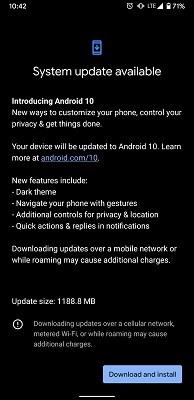
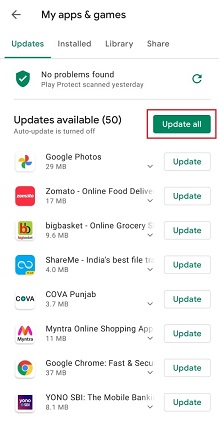


.jpg)
